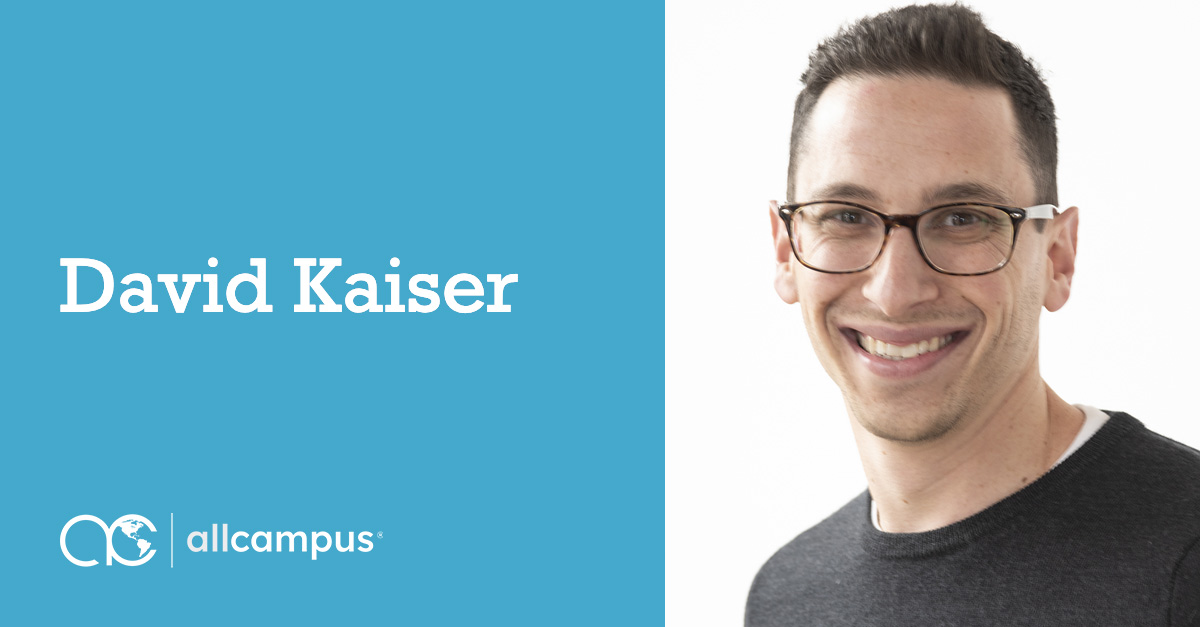How to Choose Between Tuition Revenue Share and Fee-for-Service Models
How much risk is your university willing to take on?
It’s one of the most important questions a college or university should ask themselves before launching a new online program. A new degree or non-credit certificate requires a significant investment of time and money. Even after the program is established, it requires ongoing resources to remain successful term after term.
“It is important to understand and be realistic about your own capabilities as a university,” explains Jim Lummus, SVP of partnership development at AllCampus. “Assess what you can do and how much your team can handle. You don’t want to make a significant investment and then not get the expected return,” he says.
A partnership with an online program manager (OPM) can help offset this risk. Even universities that are prepared to take on a significant amount of investment can benefit from a partnership, as they gain access to data-backed strategies and a team of specialists who know how to launch a program and what it takes to make it successful in the face of ever-changing market forces.
This is where two partnership models come into play: revenue share and fee-for-service. Both have their advantages, but the best choice ultimately comes down to the needs of the institution.
To help guide this decision, the online education experts at AllCampus have put together this primer for academic leaders and anyone considering an OPM partnership.
What Is Revenue Share?
What Is Fee-for-Service?
Hybrid Models Do Exist
How to Get Help Making the Decision
What Is Revenue Share?
Revenue share is the most common model found in OPM-university partnerships. In this arrangement, the OPM provides a bundle of services to bring a new degree or non-credit certificate program online, which typically includes: capital investment, course design and development, marketing, recruitment, student services, design, technology support and much more.
In return, the OPM receives a percentage of generated revenue for each student enrolled who completes their degree or certificate program.
Advantages:
- The OPM covers all upfront costs to develop and market the program, and in turn assumes more of the risk.
- All services continue after the program is off the ground, with a seamless pivot from launching a successful program to growing it sustainably.
- The university gains access to an entire suite of services that are optimized for long-term success.
A Whole Team Working for You
Imagine adding highly skilled personnel to your team without having to find, hire and manage a new cohort of employees. When a university enters a revenue share partnership, they gain an end-to-end roster of experts.
These are professionals whose full-time job is to support educational programs using proven methodology. They know, for example, the best ways to guide prospective students or optimize the search rankings of a website or connect with corporate leaders.
“A full-service OPM partnership means one team all working together,” says Andrea Maconachy, EVP of marketing at AllCampus. “Our enrollment specialists are talking to prospective students all day, and they share that qualitative, real-time data with our media managers, our creative teams and our search engine optimization (SEO) experts. Those groups then use that frontline information to improve their efforts on behalf of the partner.”
“It makes the full bundle that we provide extremely nimble and allows us to convert at a much higher rate,” she says.
The Tuition Question
A common misconception is that all revenue share agreements lead to higher tuition prices. In reality, OPMs focus on competitive pricing, which in the majority of cases means they recommend a lower tuition price.
“At AllCampus we have seen historical data that shows you can actually increase enrollments (and overall revenue) for a program by lowering the overall tuition in a competitive marketplace,” said Kyle Shea, EVP of partnership development. “It creates value for the program and more importantly it’s a savings for students. Sustainable tuition pricing fits our mission of making higher education more accessible, affordable and equitable.”
Creating the Revenue Share Proposal
When setting a revenue share percentage, the goal is to create an economical, sustainable agreement. Program managers like AllCampus run models to analyze anticipated costs and predicted results to determine what percentage is best for both parties.
Universities who enter into revenue share agreements usually sign up for a multi-year partnership. This is because it takes time to build programs to a meaningful size and to recoup the initial investment into a new program launch.
That timeframe can vary depending on a number of variables, such as the university’s brand, program pricing and admissions standards, but a widely accepted average is that it takes three to four years for tuition revenues to overtake expenses in most cases.
Recruitment cycles are lengthy; a longer contract allows the OPM provider to refine and optimize their strategies to bring the best value to a partnership.
![]()
What Is Fee-for-Service?
In a fee-for-service agreement, the OPM provides specific services, which the university pays for up front. It is a tailored approach; they choose and pay only for what services they need. This arrangement puts the initial outlay and risk in the hands of the university.
Advantages:
- Often lower priced than a revenue share model because the university is using fewer services, though they are taking on much more of the risk and staffing expenses.
- The program manager focuses on maximizing the university’s initial investment.
- Costs are more predictable for the institution, as they know exactly how much they will pay, based on agreed-upon rates.
For organizations that already have strong teams in place, such as a robust admissions office or a longstanding student services team, fee-for-service can be a good option for filling in any need gaps.
The Rate Card
The rate card is a list of what the OPM charges for each service set. It takes into account monetary costs and the personnel needed to provide the service, both for an initial launch and while a program is in market. Most costs remain the same from partner to partner, though there may be some variable costs based on an analysis of what it will take for a school to reach their enrollment goals.
OPMs like AllCampus have years of experience launching hundreds of programs. That experience, combined with a proprietary analytics platform, means they know precisely what it takes, and how much time it takes, to bring a program to market.
Marketing support is the top request from universities, but nearly every element that comes bundled in a revenue share agreement is also included in fee-for-service. These services can include:
- Corporate partnerships
- Course design and development
- Creative and design
- Content production
- Enrollment services
- Market research
- Recruitment
- Media placement and management
- Retention
- Search engine optimization
- Social media management
- Student services
Creating the Fee-for-Service Proposal
Because fee-for-service requires an upfront buying decision, this process must be thoughtful and highly transparent.
When a university initiates a conversation about a fee-for-service agreement, AllCampus will start by looking at the enrollment goals for a program. We ask, what would successful numbers look like?
Using that, AllCampus works backwards to set a marketing budget. Then we discuss what areas the university could use the support of the OPM. Once those needs are determined, we use the marketing budget and the rate card to create the proposal.
On average, fee-for-service agreements are shorter than revenue share agreements. This is because the university is making the bulk of the investment and so the program manager does not need to recoup those costs.
Hybrid Models Do Exist
It comes down to flexibility: many OPMs will offer a hybrid option if it makes the most sense. This might occur when a university is signing on with a mix of programs or academic units that call for different approaches. Or when a university wants to pay for extra services for a one-off project while maintaining revenue share for their ongoing programs. Tell your prospective program managers at AllCampus about any special circumstances and they will create a solution for you.
What’s Best for Your University Is Best for the OPM
No OPM should push you to choose one option over the other, especially if it goes against the best interests of your institution. It is ultimately your decision, and it is the provider’s job to work for you. If your team is candid about needs and desired outcomes, the OPM should provide you with a customized plan that matches those goals.
“We’re not partial to one or the other option,” said Jim Lummus. “We just want to understand what matters to your university, what your situation is and how we can put together a proposal that will work.”
Flexibility and creativity are core competencies at AllCampus. It is how we stay agile in the face of ongoing changes in the education market and in the needs of students. These values are also critical to laying the foundation for a partnership that is both successful and sustainable.
How to Get Help Making the Decision
This overview cannot capture all the nuances and circumstances unique to each university’s situation. That is why anyone considering the launch of a new program or the revitalization of an existing one should set up a consultation.
Even if you do not move forward with an OPM partnership, your organization benefits from hearing from experts who know the process inside and out.
“Launching the right programs in the right construct is so important,” said Kyle Shea. “We inform the decision for each partner so they can pick what works best for them.”
“We’re here as your advisors to come up with the best solution in a partnership model that works for you overall,” he said. “We can help advise you on what’s the best option for you to be successful in a partnership.”


 The college campus was once synonymous with luscious green quads sprinkled with students reading under the shade of trees. Studying at a university meant commuting to class, packing into a lecture hall and scribbling notes as a professor spoke. Now, through online learning, the traditional campus has expanded to home offices and coffee shops around the world.
The college campus was once synonymous with luscious green quads sprinkled with students reading under the shade of trees. Studying at a university meant commuting to class, packing into a lecture hall and scribbling notes as a professor spoke. Now, through online learning, the traditional campus has expanded to home offices and coffee shops around the world.